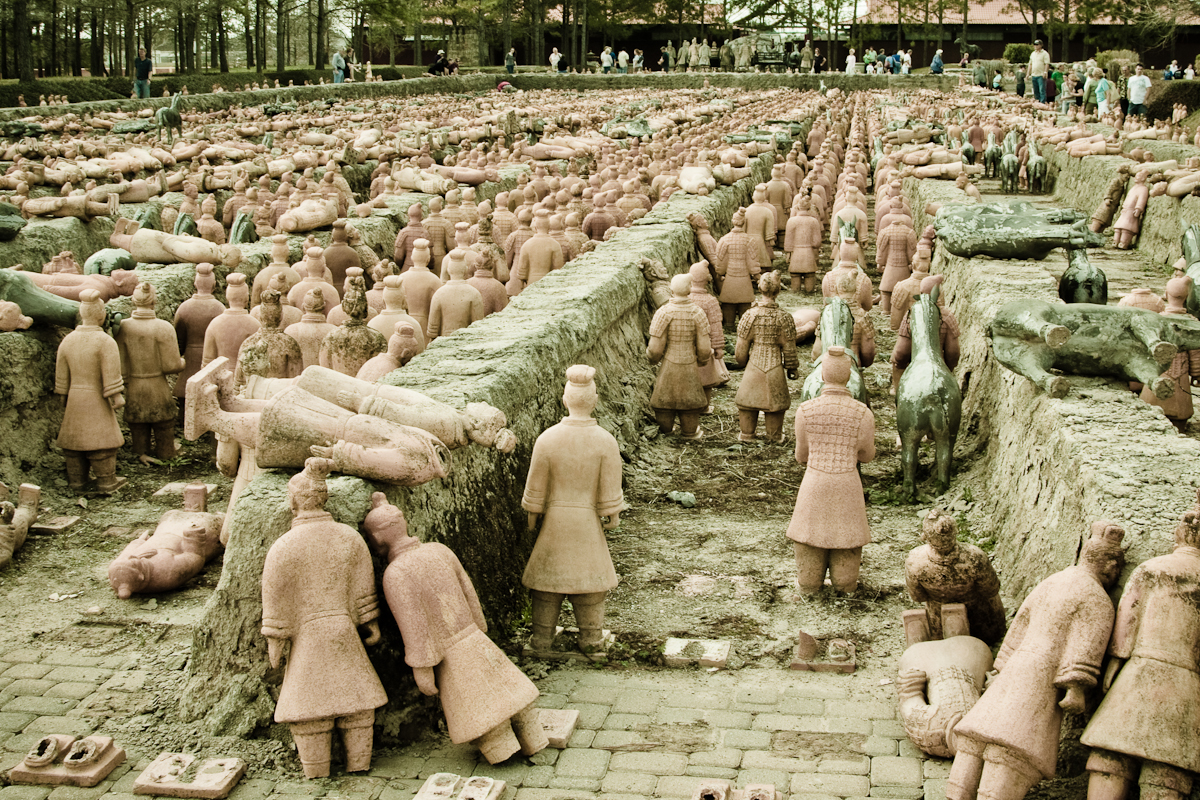

At first glance, Forbidden Gardens, the odd miniature tribute to the wonders of China located just east of Katy, looks shabby and weathered. Paint peels on the tiny model of the emperor’s summer home, pigeon shit covers the Forbidden City, and fiberglass cracks and peels from the statues of horses that guarded the emperor’s tomb.
But the story behind the outdoor museum is more interesting than its appearance implies. An hour-long tour with one of the museum’s well-versed guides makes the entry price of $10 very worth the drive out of the loop.
Forbidden Gardens opened in 1996, a private venture built by a man named Ira Poon, a Hong Kong businessman who made his fortune in real estate. His children were going to school in the United States and he felt they weren’t learning enough about their own culture, according to weekend manager and tour guide Alicia Mendez.
Poon chose Houston as the location for his museum because the city has one of the largest Asian populations in the country. He built the museum at Franz and Grand Parkway because the lot used to be a rice field, and it reminded him of home, Mendez said.
Poon spared no expense in the building of his museum. The 6,000 terra cotta soldier replicas were hand-made in Xi’an, China, using molds that were later destroyed. All the parts for the sprawling 1/20th scaled model of the Forbidden City and Calming of the Heart, the emperor’s summer home, were built in China and then shipped to Houston. Poon even paid for several of the model-makers to fly to Houston to assemble the models by hand, including painting all the details and applying gold leaf to many of the pieces.
In 1996, when the museum first opened, it must have been an amazingly detailed sight. But Poon and his builders didn’t account for the Houston heat and humidity, which ruined a lot of the hand-painted details. Each terra cotta soldier used to hold a wooden weapon in his hand, but reckless children would climb into the display and take the swords to play with. When the soldiers started to break or peel, it was impossible to order more because the molds had been destroyed. Mendez said she and coworkers spend a few hours each summer having at the displays with Gorilla Glue to fix what they can.
The Forbidden City is under a large metal pavilion, and features the most intricate models, many of which include tiny people in the formation of a ceremonial procession. The pavilion was ostensibly meant to protect the exhibit from the weather, but it gave rise to a new problem, pigeons. Even a large decoy owl can’t keep the pigeons from nesting in the rafters and crapping all over one of China’s most important cultural icons.
Even the location, the rice field which reminded Poon of his hometown, gives rise to problems. In rainy weather the entire museum floods, bringing with it wild animals from the neighboring fields and reservoirs, including water moccasins. The floods mean Forbidden Gardens is occasionally closed.
Quoted from forbidden-gardens.com and blogs.houstonpress.com